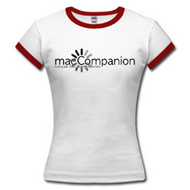iCable™ - Fiber optic cable by Monster®
Reviewed by Richard Campbell
|
http://www.monstercable.com
Monster iCable® Fiber Optic Kit http://www.monstercable.com/productDisplay.asp?pin=2809 $29.95 USD, $35 CAD, £15 GBP, €23 Euro
Monster® iCable® Fiber Optic for Apple® Products http://www.monstercable.com/productDisplay.asp?pin=2177 $44.95 USD, $53 CAD, £23 GBP, €35 Euro
Requirements: Other than needing a computer with optical output, Monster® cautions to “Use with AirPort Express™. Requires Mac OS® X v10.3 or later, and iTunes® 4.6 or later to be installed on your Mac®; also requires stereo system or AV receiver with optical digital audio input.”
Strengths: Great optical audio cables for all your needs. Weaknesses: Personally feel they are too expensive. |
|
iCable™ is a product line by THE audio cable company ‘Monster®’ designed for all your Apple® connections. I will be reviewing two of their fiber optic cables.
FYI: Fiber optic cables, or just optical cables are also known as TOSLINK™ cables because it was the Toshiba Corporation that created these types of optical connections, ie TOShiba LINK. The generic name is EIAJ optical - boy that rolls off the tongue - which denotes the type of end connectors used in these optical cables.
The visual difference between the two iCables™ I am reviewing, is one is black and one is white. I believe the black one came out first when only the Power Mac® G5 had an optical port, hence no mini-optical adaptor came with the black cable. The white one seems to be the recent model; it came with a mini-optical adaptor and is advertised for use with the AirPort Express™,which uses the mini-optical port. This means it will also work with the present iMacs® and MacBooks®. The black one is a little thicker than the white one, but I could not find on Monster’s ™ web site any differentiation between them using technical specifications. The mini-adaptor that came with the white iCable™ fit the black just fine.
Note: The mini-adaptor only adapts the shape of the standard connector; no changes or alterations to the optical transmission of the audio occurs. Optical cables are digital audio - either it works or it doesn’t.
The setup I used was my iMac® with the mini-optical out connection and my Pioneer® 1015TX with its optical inputs. To minimize any other audio problems, I used my Sony® Professional headphones for all tests. The music was ripped to iTunes in AIFF format, and was a mix of classical and pop.
Right to the point - there is a significant, enjoyable difference between using optical connections over the standard wired ones. I first listened to a high-end wired RCA to mini plug connection between my Pioneer® and my iMac®, and then I did it with the white fiber optic cable. The quality of the music was noticeably improved when listening to the music over the optical connection from the computer as opposed to the copper wire connection. I expected this, but I had never actually done an A/B comparison before. I was noticeably impressed.
Now the sticky question, “Are Monster® optical cables better than cheaper alternatives?” I will admit I do not possess sensitive scientific instruments to test transmission changes and variances in optical cables - I only have my ears.
Truthfully, my ears could not tell the difference, and neither could my wife who is a classically trained musician. I never expected there to be a difference. Optical cables are transmitting digital audio, the SPDIF standard to be precise, and either it works or it doesn’t.
I did an A/B/C comparison between the black cable, the white cable and a much less expensive optical cable I bought at a local store. They all used the same mini-optical adaptor that came with the white cable. I listened to various pop songs and dynamically charged classical music. I listened loud and soft, but no difference was discernible. This does not mean there is no measurable difference between Monster® optical cables and others brands, just that my ears couldn’t detect it.
I will be honest - the look and feel of the Monster® cables was nicer, not more flexible, but nicer than the no-name brand and having a white cable connecting to a white computer might be worth it for the color purists out there, but your choice is your own. One item worth mentioning, there are these little plastic end caps that protect the exposed optical ends of the cables when not in use; the no-name brand had them actually attached to the optical wire itself, which meant you wouldn’t ever lose them. I thought that was a nice touch.
I also did one other listening test. I wanted to see if connecting the head phones directly to the iMac® would be better or worse. It wasn’t as dramatic as the copper vs. optical test, but basically the analog/digital converters in the iMac® are not quite as good as the ones in a good amplifier. This is not surprising, but does confirm that the best way to get sound out of your Mac® is to use the optical connections.
To summarize my opinion - hands down, optical cable is the best way to get high quality audio out of your Apple® product. There is nothing wrong with the iCable™ Fiber Optic Cables by Monster®. Good, solid, feels nice, looks nice and does the job they are made for perfectly, I just don’t know if they are worth the extra money. The no-name cable in contrast was only $10 US.
This was my first review for MacCompanion, so I hope you found it helpful. If you have any questions in regards to this review please feel free to contact me.
help@iRich.ca

